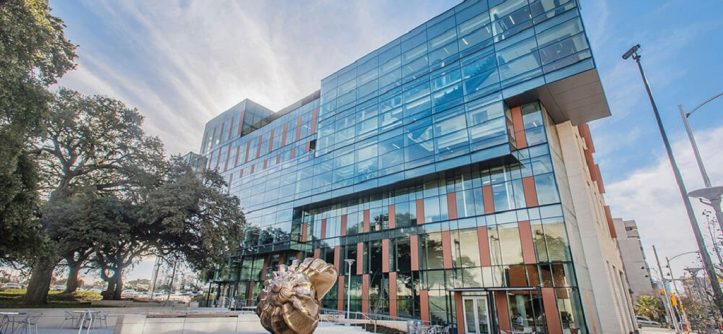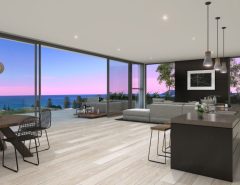Commercial properties are not just locations at which work occurs but where so many people live out large portions of their life. For this reason, utilizing modern commercial property designs is essential to the longevity, livability, and attractiveness of commercial properties. In this article, the best modern commercial designs currently in use will be laid out and explained. Let’s dive in!
6 Modern Commercial Designs
-
Transitional Design
Transitional design is when blending older designs or architecture with new designs and architectural structures. Adding industrial rivet siding (considerably modern) to an existing wood-laden wall would be an example of transitional design. The whole concept revolves around not replacing every bit of old architecture when remodeling or adding additions. This allows for the essence of modern design elements to poke its head out while appreciating the good in the old and, thus, offering a type of transitioning ambiance.
-
Geometric Repetition Design
The next modern commercial design to consider for your current or future commercial property is geometric repetition. This style of design is most easily understood in terms of lines. Repeating designs are an element of modern design that creates a uniformity contemporariness when done correctly; this requires using multiple materials and colors. An example of this sure-fire modern design is parallel lines, repeated throughout siding, panels, windows, and railings, creating a continuous design that brings the eyes along effortlessly. Keep in mind, sharp edges and straight angles are the easiest options to work with when it comes to repetition.
-
Perspective Shifting Design
Perspective shifting design is an intriguing and aesthetically pleasing way to bring modernity to a commercial space. The exterior design of a building can be taken much further than the typical flat siding and windows designs we’ve grown so accustomed to. By adding faux balconies, bump-outs, or even protruding window frames (such as a-frames), the design becomes more complex without adding too much or cluttering the design. The shifted perspective also helps your space stand out and gain the attention of passerby’s, which should always be on the mind of a commercial space designer.
-
Pop Color Design
Pop color design is another modern design to consider for a commercial space, especially one with any association with social media or online businesses, which often utilize fun and bright design methods. Pop color design is when particular aspects of the building, such as bump-outs or selective beveled exteriors (windows, railings, etc.), are brightly colored or just vibrant as opposed to the remainder of the building and its architecture. The pop color design represents the manufactured nature of modernity and the colorful aesthetic future for which we’re headed.
-
Subtle Minimalism
Minimalism has been a contemporaneous design for decades now, and while it’s still rooted in modernity, it can seem a bit cold or disconnected when it comes to commercial designs. That’s why subtle minimalism is a design method to be considered. This is minimalism with subtle elemental additions, such as finely finished corner bead on uniform walls or color-matched trimming. The goal is to maintain the minimalist feel, especially regarding monotones, but to make the uniformity slightly more aesthetically busy. It’s the best of both worlds type of design method.
-
Mixed Aspects Design
The final modern commercial design you should consider is a mixed aspect designing. This design method is best achieved when there is one element of the design that remains constant, such as a particular wooden trim throughout or a particular paneling choice. This allows the eye to easily comprehend the commercial space as one. Once the constant has been determined, the design can be played with, using different window styles on different faces of the building, different roofing designs on separate parts of the building, or any other such design you may wish to play with. Mixing materials and different design elements (eg. industrial, rustic, minimalist, etc.) on top of a design constant can really bring your space to life. Just be sure not to overdo it, which can leave your space looking jumbled or confused.
Conclusion
In conclusion, there are many modern design components that can be utilized to bring your commercial space to life and make it feel like your own. As we can deduce from the previously mentioned design styles, your personal preferences and branding will likely determine the design style you decide to pursue. It’s also important to note that different industries call for the implementation of different styles, and branching outside of these design expectations can either hurt you or give your commercial space a leg up. So tread carefully and consult an architecture firm if you haven’t yet or if you feel it could help. But ultimately, one should go with a design style that feels like home to you and your associates.





Leave a Reply
You must be logged in to post a comment.